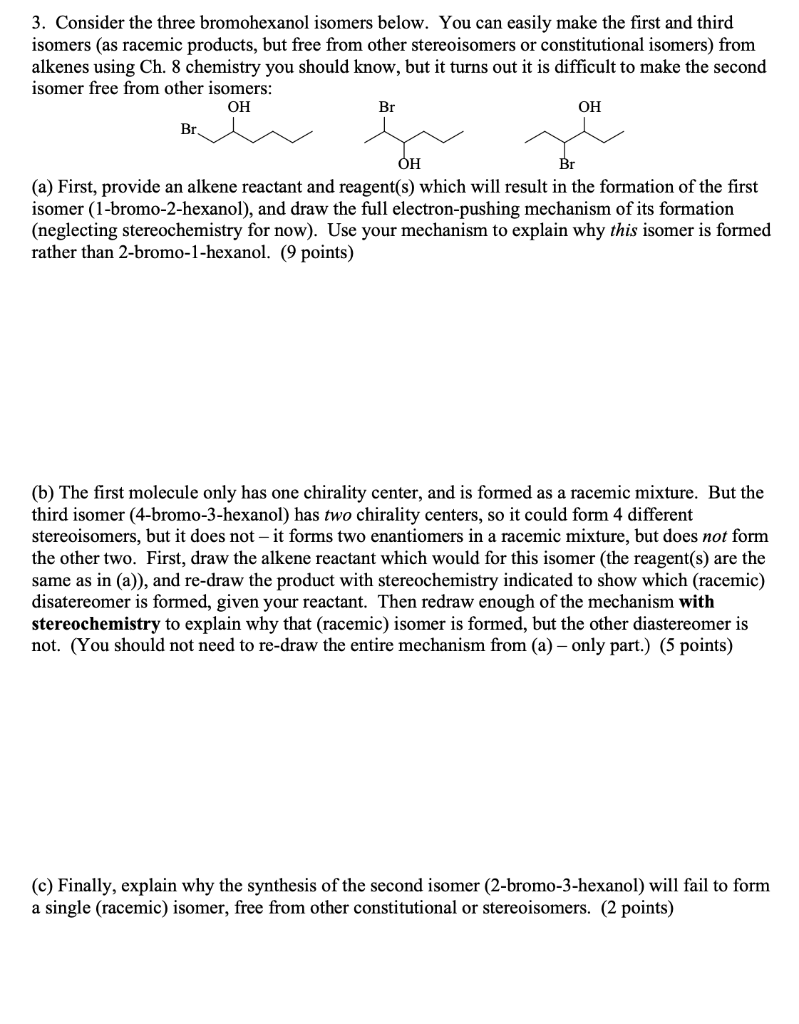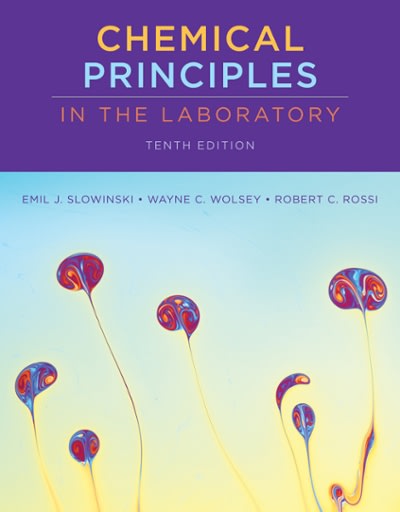Answered step by step
Verified Expert Solution
Question
1 Approved Answer
Please answer all parts of question 3 3. Consider the three bromohexanol isomers below. You can easily make the first and third isomers (as racemic

Please answer all parts of question 3
3. Consider the three bromohexanol isomers below. You can easily make the first and third isomers (as racemic products, but free from other stereoisomers or constitutional isomers) from alkenes using Ch. 8 chemistry you should know, but it turns out it is difficult to make the second isomer free from other isomers: OH Br OH Br Br OH (a) First, provide an alkene reactant and reagent(s) which will result in the formation of the first isomer (1-bromo-2-hexanol), and draw the full electron-pushing mechanism of its formation (neglecting stereochemistry for now). Use your mechanism to explain why this isomer is formed rather than 2-bromo-1-hexanol. (9 points) (b) The first molecule only has one chirality center, and is formed as a racemic mixture. But the third isomer (4-bromo-3-hexanol) has two chirality centers, so it could form 4 different stereoisomers, but it does not - it forms two enantiomers in a racemic mixture, but does not form the other two. First, draw the alkene reactant which would for this isomer (the reagent(s) are the same as in (a)), and re-draw the product with stereochemistry indicated to show which (racemic) disatereomer is formed, given your reactant. Then redraw enough of the mechanism with stereochemistry to explain why that (racemic) isomer is formed, but the other diastereomer is not. (You should not need to re-draw the entire mechanism from (a) only part.) (5 points) (c) Finally, explain why the synthesis of the second isomer (2-bromo-3-hexanol) will fail to form a single (racemic) isomer, free from other constitutional or stereoisomers. (2 points)Step by Step Solution
There are 3 Steps involved in it
Step: 1

Get Instant Access to Expert-Tailored Solutions
See step-by-step solutions with expert insights and AI powered tools for academic success
Step: 2

Step: 3

Ace Your Homework with AI
Get the answers you need in no time with our AI-driven, step-by-step assistance
Get Started


